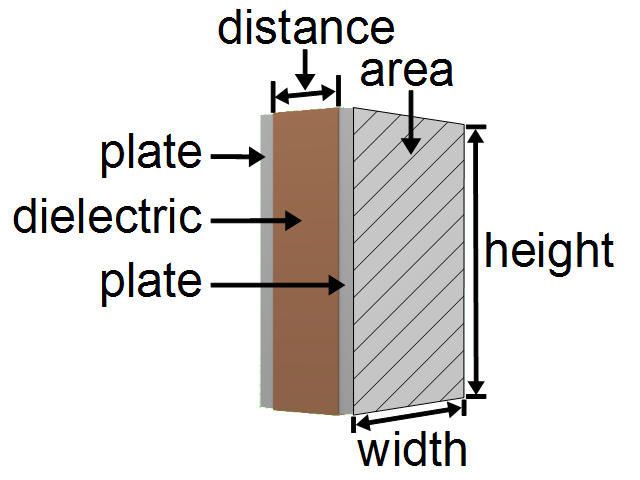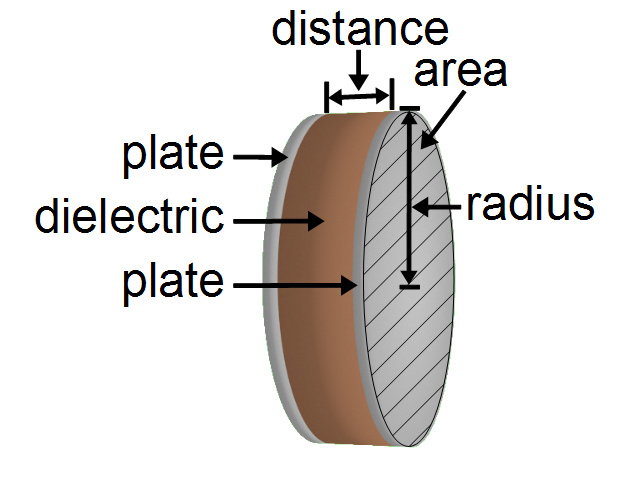Capacitance formulas and calculators
This page contains formulas and calculators for capacitances of various shapes or types of capacitors. This is also useful is you're going to be using your capacitor in an LC tank resonant circuit.
Capacitance of parallel plate capacitors
A parallel plate capacitor consists for two flat, parallel plates that are the electrodes, separated by a dielectric, or insulator. For the formula and calculator here, the plates can be any shape, as long as they're flat, parallel and you know the area of the plates or whatever's needed in order to find the area.


The formula for the capacitance of a parallel plate capacitor is:

Where:
- εr = relative permitivity of the dielectric (less commonly known as K, the dielectric constant)
- ε0 = 8.854x10-12F/m (farads/meter) = vacuum permitivity aka the permitivity of free space
The diagrams show parallel plate capacitors with different shaped plates, one rectangular and one circular. The formula for calculating the area of a rectangle is:

and the formula for calculating the area of a circle is:

Where π is pi which is 3.14159.
Capacitance of cylindrical capacitors
A cylindrical capacitor consists of two cylinders, also referred to as the plates, that are the electrodes, separated by a dielectric, or insulator.

The formula for the capacitance of a cylindrical capacitor is:

Where:
- εr = relative permitivity of the dielectric (less commonly known as K, the dielectric constant)
- ε0 = 8.854x10-12F/m (farads/meter) = vacuum permitivity aka the permitivity of free space
Video - How to Make Capacitors - Low Voltage
This video not only shows how to make capacitors but goes over the capacitance formula in a more dynamic format than above. After all, if you're doing to make a capacitor, you first need to know how to design the capacitor.
Video - How to Make Capacitors - High Voltage
This video shows how to design capacitors for high voltage by explaining, measuring, and building for the breakdown voltage/dielectric strength so that the capacitor can handle the desired high voltage.
